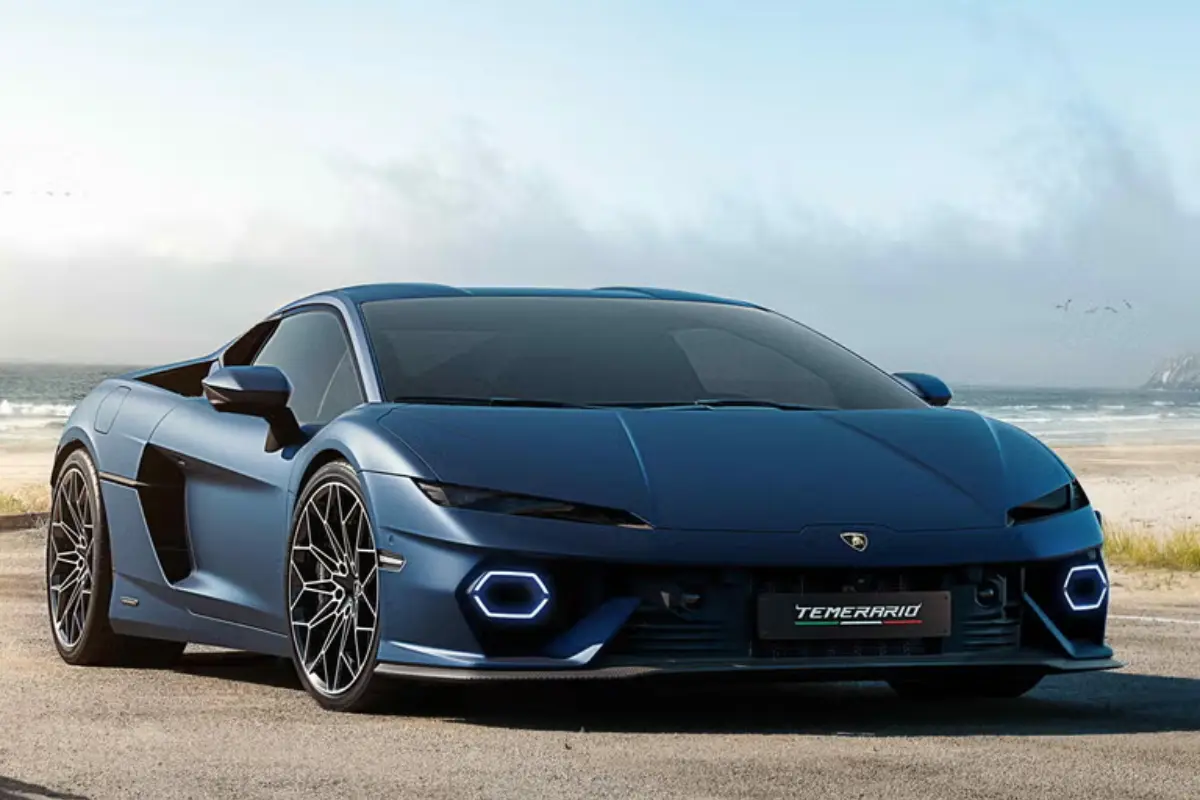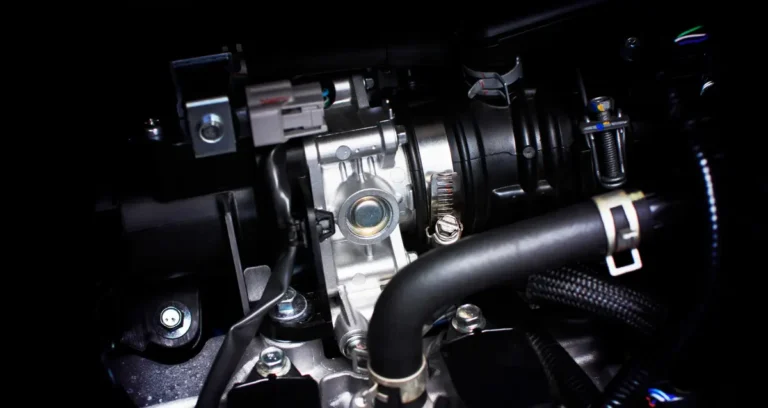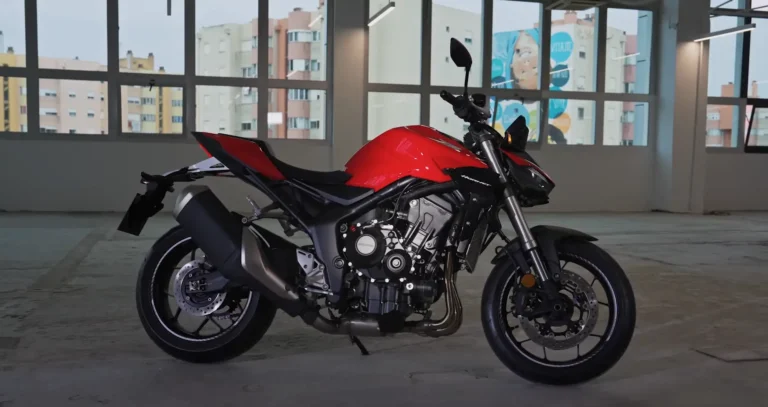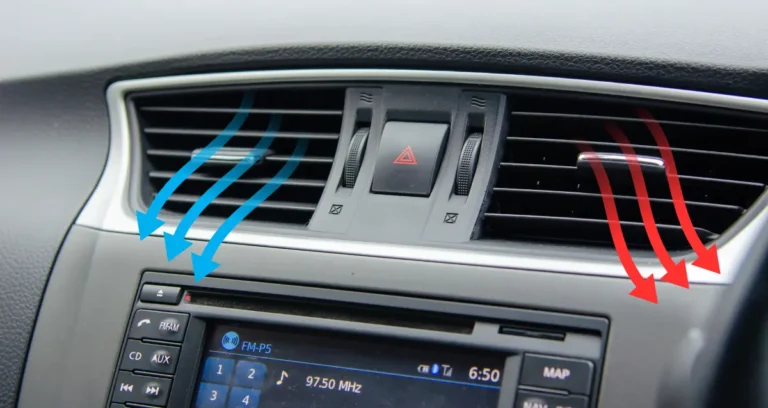Lamborghini Will Wave Goodbye To The V10, As It Looks Forward With An Ingenious Turbocharged V8 Engine
Lamborghini is known for innovating and pushing the limits of performance, and their latest move has caught the attention of the automotive world. The company has unveiled a twin-turbocharged V8 engine capable of redlining at a staggering 10,000 revolutions per minute (RPM).
This engine powers their latest supercar, which replaces the iconic naturally aspirated V10 engine that has defined Lamborghini’s supercars for years. In this article, we will dive into the details behind this incredible powerplant, its performance, and why Lamborghini made the bold decision to shift from the V10 to a turbocharged V8.
Why Has The V10 Been Replaced By A Turbocharged V8?
For years, Lamborghini has been synonymous with naturally aspirated engines, especially their famous V10s, known for delivering an exhilarating driving experience and impressive performance. So what prompted this transition to a twin-turbocharged V8? According to Ruben Moore, Chief Technology Officer at Lamborghini, the shift was motivated by both regulatory requirements and competition.
Ferrari and McLaren, for instance, have already moved to smaller engines with turbochargers and hybrid assistance for increased performance. Ferrari’s 296 GTB, with its 3.0L V6 hybrid setup, surpasses Lamborghini’s V10 in horsepower.
The Lamborghini V10 had reached its technical limit at around 630 horsepower. To stay competitive, Lamborghini needed to adopt turbocharging, allowing for higher power output while complying with emissions regulations and embracing hybrid technology.
The new 4.0L twin-turbo V8 enables Lamborghini to remain competitive by delivering more power and stepping into the hybrid era. What sets this engine apart is its ability to rev up to 10,000 RPM—1,500 RPM more than comparable turbocharged engines—making it one of the highest-revving production V8 engines ever seen.
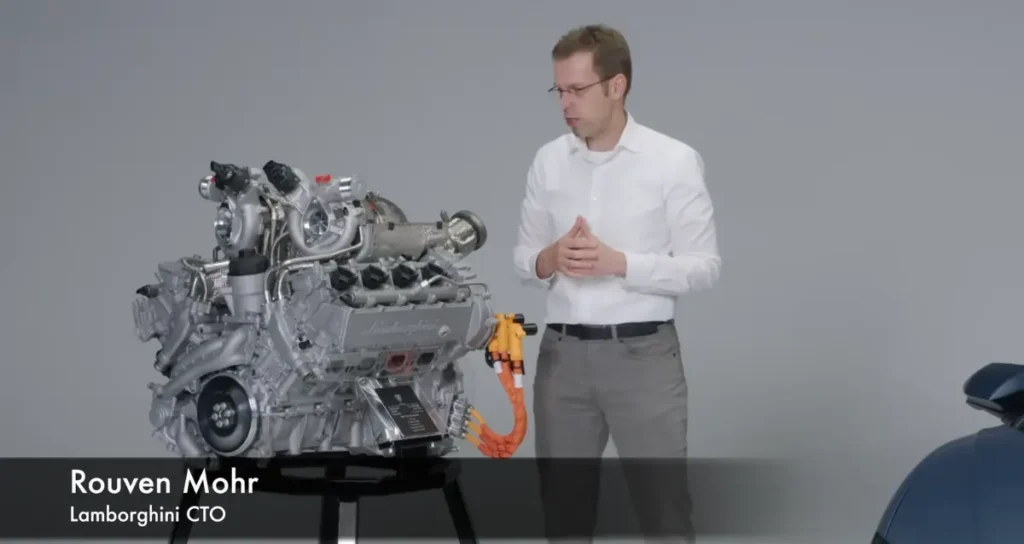
The Power Output – How Much Is Enough?
A key question surrounding this new engine is how much power it can produce. To understand this, we need to examine the entire powertrain of Lamborghini’s latest supercar. The powertrain consists of two electric axial flux motors at the front, similar to those in the Lamborghini Revuelto, while the rear features the V8 engine paired with an 8-speed dual-clutch transmission. Between these is a third axial flux motor.
The V8 engine alone delivers 800 metric horsepower (CV), which translates to approximately 789 horsepower in American units. When combined with the output of the electric motors, the total theoretical power reaches 1,250 horsepower. However, due to the limitations of the small 3.8 kWh battery pack that powers the electric motors, the real peak system output is capped at 920 horsepower.
The V8 engine itself produces 730 Nm of torque, but the overall system torque is limited to 800 Nm. This limitation comes from the battery’s ability to supply power to the electric motors at any given time. The electric motors are designed to provide torque fill when the turbochargers experience lag, ensuring smooth power delivery across the RPM range, especially at lower speeds and during gear shifts.
What’s So Special About The New V8 Engine?
This new twin-turbocharged V8 engine is not only remarkable for its 10,000 RPM redline but also for its unique design and performance characteristics. Lamborghini’s engineers designed this engine in-house, without borrowing components from their parent company, Volkswagen. This bespoke approach allowed Lamborghini to set a new standard in the industry.
While there are engines out there with more power or higher RPM limits, no other engine in production combines these attributes in the same way. Lamborghini Temerario’s 4.0L twin-turbo V8 stands out because of its displacement, high RPM capability, and twin-turbocharging. Lamborghini also ensured that the engine maintains linear power delivery, a characteristic of naturally aspirated engines, even though it uses forced induction.
One of the most impressive aspects of this engine is the rapid rev gradient—how quickly the engine revs up once you step on the accelerator. This feature mimics the response of Lamborghini’s V10 engine, giving drivers a similar feel despite the turbocharged setup. The electric motors also provide torque fill during gear shifts and at lower RPMs, helping to eliminate the common drawbacks of turbocharged engines, such as turbo lag.
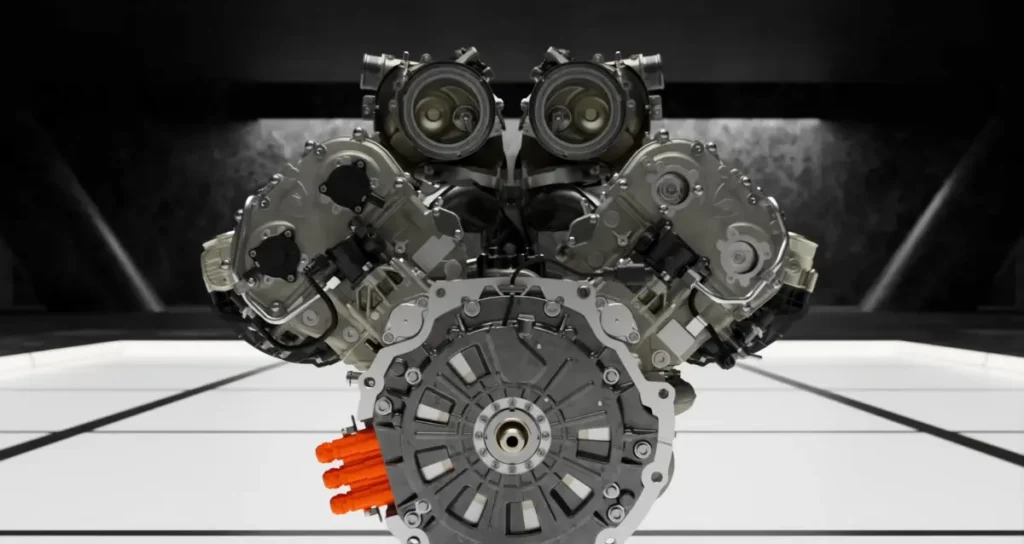
The Technology Behind the 10,000 RPM Redline
Achieving a 10,000 RPM redline in a turbocharged V8 engine is an incredible feat. Lamborghini accomplished this by focusing on two key areas: reducing the weight of rotating components and employing advanced valve control technology.
To keep the rotating mass as light as possible, Lamborghini used a flat-plane crankshaft, paired with titanium connecting rods. These lightweight components allow the engine to spin up quickly, contributing to its high-revving nature.
Additionally, Lamborghini utilized a finger-follower valvetrain system, which is more rigid and can withstand the high RPMs this engine achieves. The finger followers are coated in diamond-like carbon to reduce friction and improve durability, allowing the engine to handle speeds of up to 11,000 RPM.
Managing piston speed is also crucial in preventing mechanical damage. Lamborghini engineered the V8 with a shorter stroke (78.5 mm) compared to the previous V10, which helps reduce piston travel. This shorter stroke allows the pistons to move quickly without overstressing the components, even at 10,000 RPM.
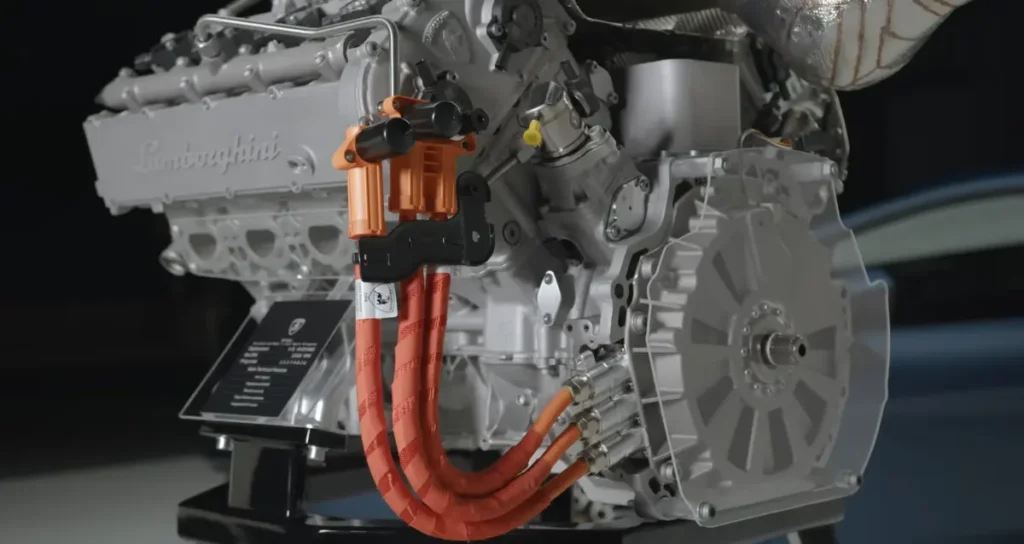
The Hybrid System and Its Role
Lamborghini’s latest supercar is equipped with a 3.8 kWh battery pack, which powers three electric motors. The battery is located in the car’s central tunnel, helping to optimize weight distribution and lower the center of gravity. While the battery is smaller than those found in rivals like the Ferrari 296 GTB and McLaren Artura, Lamborghini’s hybrid system is designed to deliver short bursts of electric power rather than providing extended electric-only driving.
The electric motors provide torque fill at lower RPMs, helping mitigate turbo lag and offering assistance during gear changes. In full-electric mode, the car can produce up to 190 horsepower, but due to the small battery capacity, the electric-only range is limited to around 10 miles. The battery can be recharged using the engine, and there’s a dedicated recharge mode that reduces engine output to 725 horsepower while charging the battery.
Conclusion
Lamborghini’s transition from a naturally aspirated V10 to a twin-turbocharged V8 with hybrid assistance marks a significant evolution in their engineering approach. The new V8 engine, with its 10,000 RPM redline, advanced hybrid system, and lightweight components, sets a new benchmark for high-performance engines.
This engine not only ensures Lamborghini stays competitive in a market embracing turbocharging and hybridization but also maintains the exhilarating performance that Lamborghini is known for.
While the V10 may be gone, Lamborghini has once again proven that they are at the cutting edge of performance and innovation. With the new twin-turbo V8, Lamborghini continues to push the boundaries of what’s possible in modern supercars.
FURTHER READING

